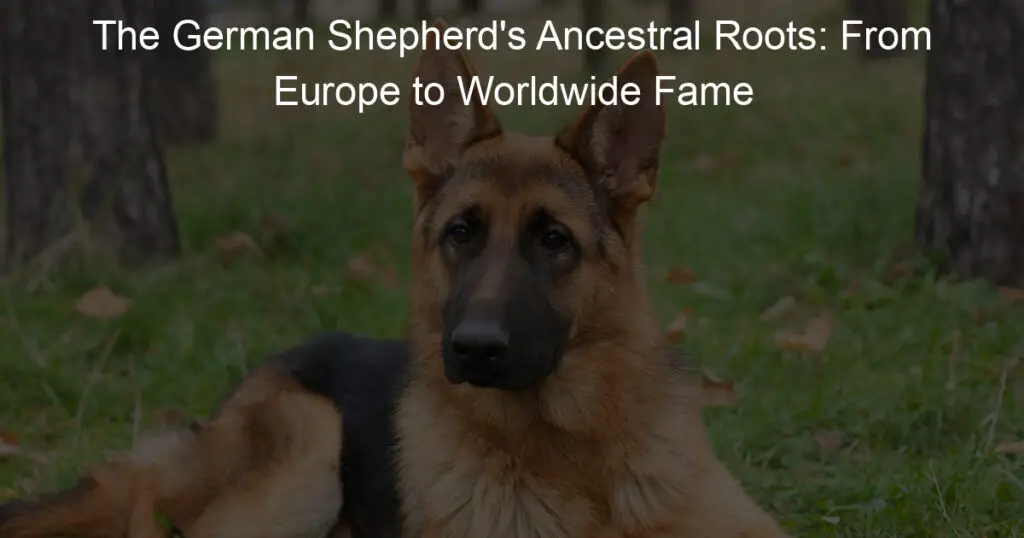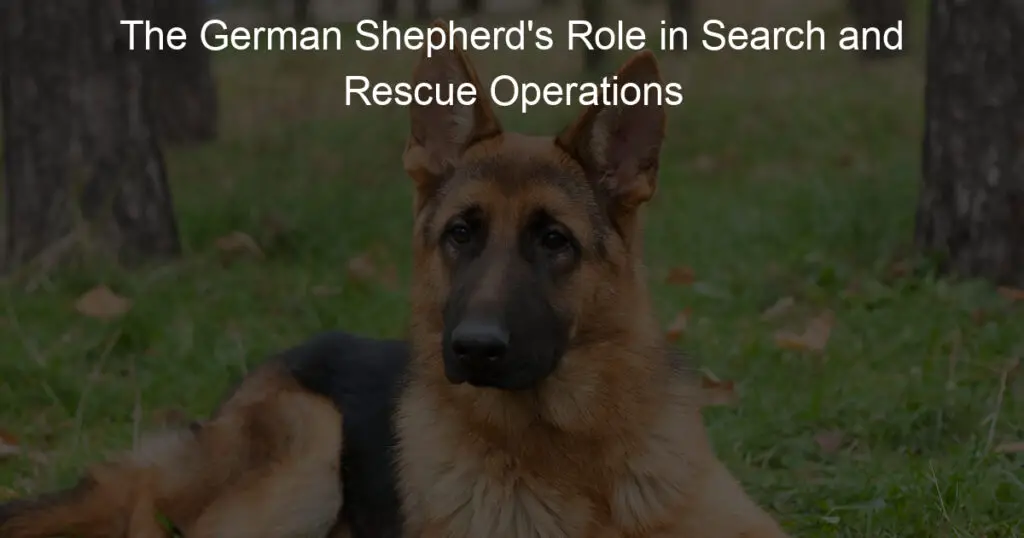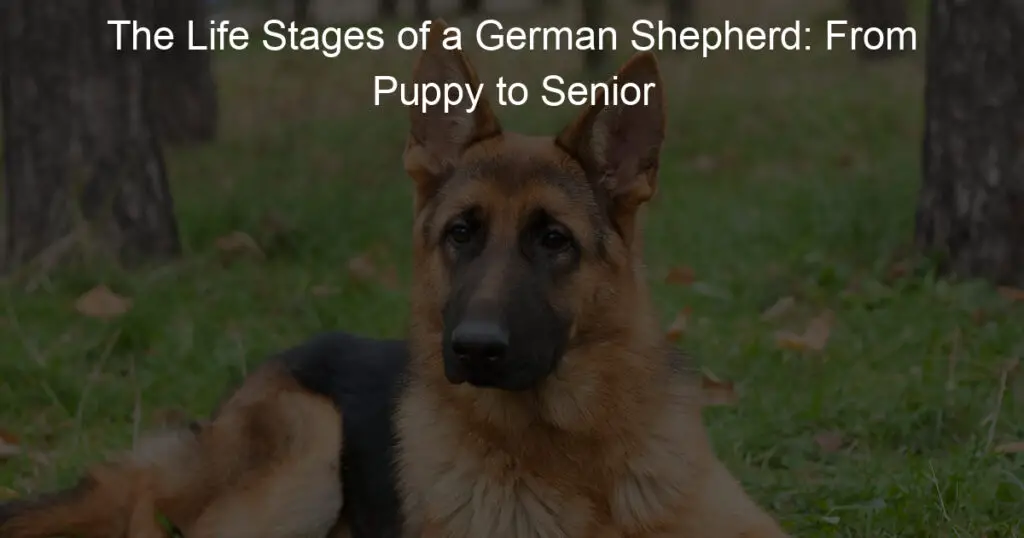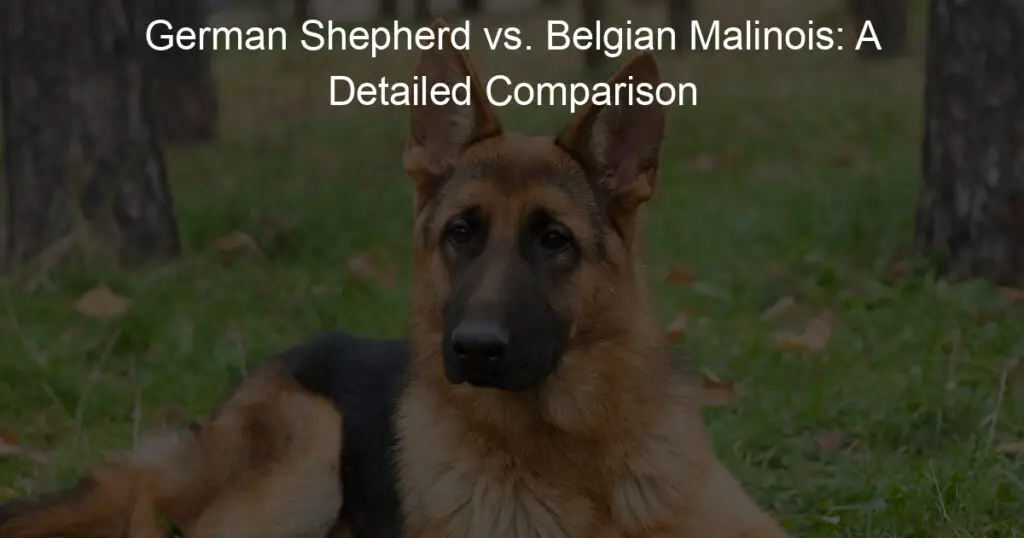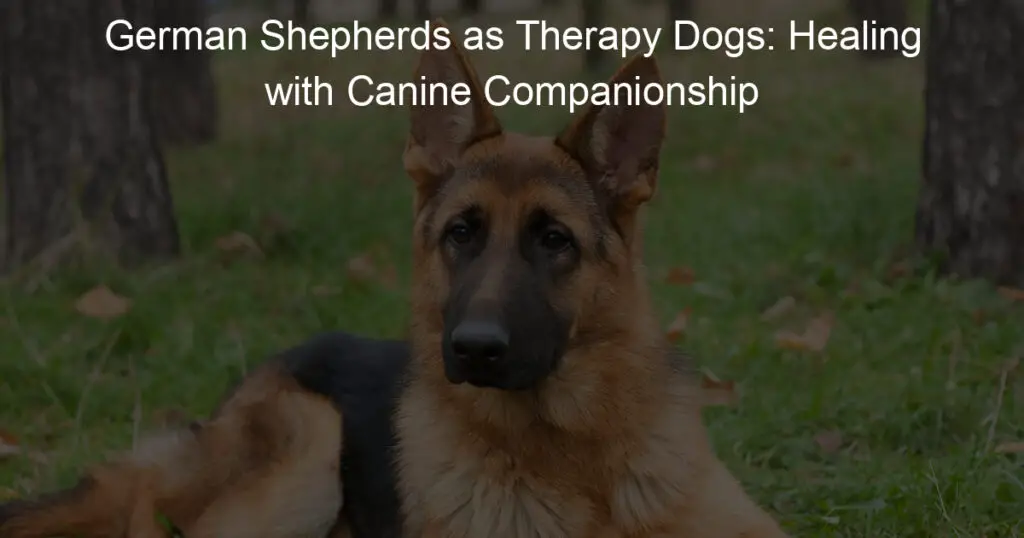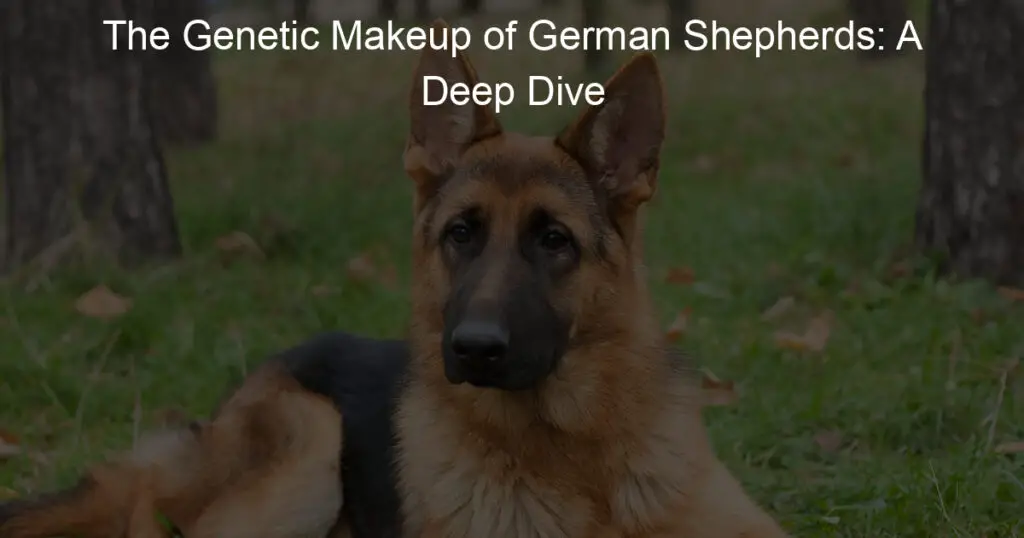This blog post delves into the rich and fascinating history of the German Shepherd breed, tracing its origins from Europe to its present-day worldwide fame. We explore the breed's early roles, the significant individuals who shaped its development, and how it evolved into one of the most popular and versatile dog breeds in the world.
1. The Origin of German Shepherds: Where Did They Come From?
The German Shepherd breed has a rich and fascinating history that traces back to 19th century Germany. It all started with a man named Max von Stephanitz, who is widely regarded as the founder of the breed. Stephanitz was a former cavalry captain and dog enthusiast who believed that the existing herding dogs in Germany lacked the necessary qualities for effective herding. He set out on a mission to create a new breed that would possess the perfect combination of intelligence, strength, and loyalty.
Stephanitz stumbled upon a dog named Hektor Linksrhein during a dog show in 1899, and he was immediately captivated by the dog's exceptional qualities. Hektor became the foundation for the development of the German Shepherd breed. Stephanitz believed that utility should be the true criterion of beauty, and he focused on breeding dogs that excelled in working capabilities rather than physical appearance alone.
To further refine the breed, Stephanitz established the Verein fur Deutsche Schaferhunde (Society for the German Shepherd Dog) in 1899. This organization played a pivotal role in shaping the breed's standards and ensuring its future success. The German Shepherd quickly gained popularity in Germany as a versatile working dog, excelling in herding, guarding, and military tasks.
German Shepherds gained international recognition during World War I when they were used by the German military for various purposes. Their intelligence, bravery, and loyalty made them invaluable assets on the battlefield. Soldiers from other countries were impressed by their capabilities and brought some of these heroic dogs back home, which further contributed to the breed's spread and popularity worldwide.
2. 'Utility is the true criterion of beauty': Max von Stephanitz and the Foundation of the Breed
Max von Stephanitz, the visionary behind the German Shepherd breed, firmly believed in the principle that "utility is the true criterion of beauty." This philosophy shaped his approach to breeding and laid the foundation for the development of the breed we know today.
- 1. A Visionary's Perspective:
Stephanitz recognized that a dog's appearance should not be the sole focus when assessing its value. Instead, he emphasized the importance of a dog's practical abilities and its usefulness in various tasks. This perspective sets him apart from breeders who prioritize aesthetics over functionality. - 2. Selective Breeding:
To create a breed that excelled in working capabilities, Stephanitz implemented a rigorous breeding program. He carefully selected dogs with exceptional herding and guarding instincts, intelligence, and physical strength. By breeding these dogs together, he aimed to produce offspring that would inherit and amplify these desirable traits. - 3. Standardization of the Breed:
Stephanitz realized the importance of establishing a set of standards to ensure the breed's uniformity and maintain its working abilities. With the establishment of the Verein fur Deutsche Schaferhunde, he created a platform for breeders to exchange knowledge and promote the breed's development. The organization established breeding regulations, conducted performance tests, and provided guidance to breeders to maintain the breed's integrity.Stephanitz's dedication to utility over appearance resulted in a breed that excelled in a wide range of tasks. German Shepherds became renowned for their versatility, intelligence, and work ethic. They were not only exceptional herding dogs but also excelled in search and rescue, police work, and military service.
3. The Role of German Shepherds in World War I
German Shepherds played a significant role in World War I, showcasing their exceptional skills and unwavering loyalty on the battlefield. They were initially utilized as messenger dogs and quickly proved their value in delivering vital messages across treacherous terrains. Their intelligence, agility, and ability to navigate through difficult conditions made them invaluable assets in the war effort.
With their acute senses, German Shepherds were also employed as sentry dogs, guarding and protecting military installations and camps. Their keen sense of smell and hearing made them highly effective in detecting intruders, alerting soldiers to potential dangers. This helped enhance the security and defense of military personnel and resources.
In addition to their roles as messengers and sentries, German Shepherds were used as search and rescue dogs on the battlefield. Their keen sense of smell allowed them to locate wounded soldiers, often in challenging environments. These brave dogs would tirelessly search through debris and under difficult circumstances to locate injured comrades, providing vital assistance to the medical teams.
German Shepherds also served as scout dogs, working alongside soldiers to detect enemy presence and alert them to potential threats. Their ability to navigate through different terrains, coupled with their exceptional hearing, made them reliable partners on reconnaissance missions. Their presence provided soldiers with the advantage of early detection and increased situational awareness.
4. How Did the German Shepherds Find Their Way to America?
German Shepherds found their way to America through the efforts of a few dedicated individuals who recognized the breed's exceptional qualities. One of the key figures in introducing German Shepherds to America was Max von Stephanitz, the founder of the breed. In the early 20th century, Stephanitz established the Verein für Deutsche Schäferhunde (Society for the German Shepherd Dog) and worked tirelessly to promote and standardize the breed.
German Shepherds first arrived in America in the early 1900s, primarily through imports from Germany. Stephanitz himself played a crucial role in facilitating the importation of German Shepherds to the United States, ensuring that the breed gained recognition and popularity among American dog enthusiasts.
It wasn't long before German Shepherds caught the attention of American law enforcement agencies, who recognized their immense potential as police and military dogs. The breed's intelligence, obedience, and strong work ethic made them ideal candidates for these roles. As a result, the demand for German Shepherds in America grew rapidly, leading to an increase in imports and breeding programs.
The popularity of German Shepherds further skyrocketed when Rin Tin Tin, a German Shepherd rescued from a World War I battlefield, became a Hollywood sensation in the 1920s. Rin Tin Tin's incredible talent and captivating performances on the silver screen captured the hearts of millions and solidified the breed's iconic status in America.
Over the years, American breeders also started developing their own lines of German Shepherds, focusing on specific traits and characteristics that suited their needs. This led to some divergence in the breed's appearance and working abilities between American and European lines.
5. The Golden Era: German Shepherds in the 1920s and Beyond
During the 1920s, German Shepherds experienced a "Golden Era" in their history. This period saw the breed rise to unprecedented fame and popularity, thanks in large part to the success of Rin Tin Tin. The Hollywood star captivated audiences with his intelligence, agility, and unwavering loyalty, becoming one of the most famous and beloved canine actors of all time.
Rin Tin Tin's success paved the way for other German Shepherds to make their mark in the entertainment industry. These highly trainable dogs showcased their versatility in various roles, from police dogs to search and rescue heroes. Their ability to perform complex tasks and exhibit unwavering loyalty endeared them to audiences around the world.
Beyond their Hollywood stardom, German Shepherds also excelled in other fields during this era. They proved themselves as indispensable working dogs in law enforcement, military, and service roles. Their keen sense of smell, agility, and trainability made them valuable assets in tracking down criminals, detecting drugs and explosives, and assisting individuals with disabilities.
The breed's popularity extended beyond their working abilities. German Shepherds became sought-after family pets, known for their protective nature and devotion to their owners. Families across the country welcomed these intelligent and loyal dogs into their homes, cementing the breed's reputation as an ideal companion.
The 1920s marked a turning point for German Shepherds, solidifying their place as one of the most revered and respected dog breeds. Their versatility, intelligence, and striking appearance made them a breed of choice for many purposes. This era laid the foundation for the continued success and admiration of German Shepherds in the years to come.
7. How Did World War II Impact the German Shepherd Breed?
World War II had a significant impact on the German Shepherd breed, affecting their population, reputation, and overall well-being.
- 1. Decreased Population and Breeding Programs:
During the war, many German Shepherds were conscripted for military purposes, leading to a decrease in the breed's population. The demands of the war effort meant that breeding programs were put on hold, resulting in a limited gene pool and potential loss of genetic diversity. These circumstances threatened the breed's future and raised concerns about potential health issues due to inbreeding. - 2. Shifting Perceptions and Negative Associations:
The German Shepherd's association with Germany, the country that initiated the war, led to a shift in public perception. Some people viewed the breed with suspicion and negativity, associating them with the enemy. This tarnished their reputation and resulted in discrimination and mistreatment of German Shepherds in certain areas. - 3. Rehabilitation and Rebuilding:
After the war, efforts were made to rebuild the German Shepherd breed and repair its image. Breeders worked diligently to revive breeding programs and reintroduce genetic diversity. Organizations and enthusiasts focused on rehabilitation, training, and showcasing the breed's positive qualities to regain public trust.Despite the challenges faced during World War II, the German Shepherd breed showed remarkable resilience. Their intelligence, loyalty, and versatility were recognized and valued by various organizations and individuals. The breed's abilities continued to be utilized in law enforcement, search and rescue, and assisting individuals with disabilities.
8. The Split: American German Shepherds vs. European German Shepherds
Over time, a noticeable split emerged within the German Shepherd breed, resulting in distinct differences between American and European German Shepherds. This division can be attributed to various factors, including breeding goals, standards, and preferences.
In the United States, American breeders focused more on the show ring and appearance of the German Shepherd. They emphasized specific physical traits, such as a sloping back and a more angulated rear end. These traits became increasingly exaggerated over time, leading to a noticeable difference in appearance compared to their European counterparts.
On the other hand, European breeders placed greater emphasis on working abilities and maintaining the breed's original traits. They aimed to preserve the German Shepherd's versatility, intelligence, and overall functionality. European German Shepherds often have a more level topline, a more robust structure, and a stronger drive for work.
The split between American and European German Shepherds also extends to temperament. American German Shepherds tend to have a calmer and more laid-back demeanor, making them suitable as family pets. European German Shepherds, on the other hand, are known for their high energy levels, intense drive, and strong working instincts. They are often chosen for roles in law enforcement, search and rescue, and other demanding tasks.
While both American and European German Shepherds remain part of the same breed, the differences between them continue to persist. It is important to note that these variations are not indicative of superiority or inferiority but rather reflect the different breeding objectives and preferences of breeders in different regions.
9. What Makes German Shepherds the Preferred Breed for Police and Military Use?
German Shepherds have long been the preferred breed for police and military use, and there are several key factors that contribute to their popularity and effectiveness in these roles.
- 1. Intelligence and Trainability:
German Shepherds are renowned for their high intelligence and trainability. They possess a keen ability to learn and retain commands quickly, making them ideal candidates for police and military training. Their intelligence allows them to understand complex tasks and adapt to new situations, making them valuable assets in high-pressure environments. - 2. Strong Work Ethic and Focus:
German Shepherds have a strong work ethic and an innate drive to please their handlers. They are highly focused on their tasks, whether it's tracking down suspects, searching for narcotics, or performing search and rescue operations. This unwavering focus and determination make them reliable and effective working dogs. - 3. Physical Abilities and Versatility:
German Shepherds possess remarkable physical abilities that make them well-suited for police and military work. They have a strong, muscular build that enables them to perform physically demanding tasks such as apprehending suspects or traversing challenging terrain. Additionally, their speed, agility, and endurance allow them to excel in various roles, including patrol work, bomb detection, and even as specialized units like K-9 units.In addition to these specific qualities, German Shepherds also exhibit other desirable traits such as loyalty, courage, and protective instincts. These traits make them highly reliable partners for police officers and military personnel, as they are willing to put themselves in harm's way to ensure the safety of their handlers and the public.
The extensive training and selection processes that German Shepherds undergo to become police and military dogs further enhance their suitability for these roles. Their natural abilities, combined with their training and the strong bond they form with their handlers, make them an invaluable asset in detecting and preventing crime, protecting communities, and serving in various military operations.
10. The German Shepherd Today: Popularity and Versatility
In the present day, the German Shepherd remains one of the most popular dog breeds worldwide, admired for its exceptional versatility and numerous desirable qualities. Let's delve into three key aspects that contribute to their popularity and versatility.
- 1. Adaptability and Trainability:
German Shepherds are renowned for their adaptability to various environments and roles. Whether it's as a family pet, a working dog in law enforcement, or a service dog for individuals with disabilities, they excel in all these areas. Their high level of trainability allows them to learn complex tasks quickly and effectively, making them ideal for a wide range of purposes. - 2. Working Abilities:
German Shepherds continue to be extensively utilized in various working roles. Their intelligence, strength, and agility make them valuable assets in police and military operations. They are trained to apprehend criminals, search for missing persons, and detect drugs and explosives. Additionally, their keen sense of smell and tracking abilities make them excellent search and rescue dogs. Their working abilities have made them indispensable in many fields and have solidified their reputation as a breed of choice for demanding tasks. - 3. Competitive Sports and Activities:
Beyond their working roles, German Shepherds thrive in competitive sports and activities. They excel in obedience trials, agility competitions, and Schutzhund, a dog sport that tests their tracking, obedience, and protection skills. Their natural athleticism, intelligence, and eagerness to please their handlers make them stand out in these activities. German Shepherds actively participate and dominate in various dog sports, showcasing their versatility and adaptability in a different setting.
11. Health Concerns: A Price of Popularity?
The popularity of German Shepherds has come with its fair share of concerns, particularly regarding their health. This breed's rise to fame has led to increased demand, resulting in irresponsible breeding practices and the emergence of certain health issues. One of the main concerns is hip dysplasia, a condition where the hip joint does not develop properly, causing discomfort and mobility issues for affected dogs. Additionally, German Shepherds are prone to elbow dysplasia, a similar condition affecting the elbow joint. These genetic predispositions are a result of breeders prioritizing aesthetics and popularity over the long-term health of the breed.
Another health concern in German Shepherds is degenerative myelopathy, a progressive disease that affects the spinal cord. This condition can lead to hind limb weakness and paralysis over time. Additionally, German Shepherds are known to be susceptible to certain types of cancer, including hemangiosarcoma and osteosarcoma. These health issues highlight the importance of responsible breeding practices and thorough health screenings to minimize the risk of passing on genetic diseases.
The German Shepherd community and responsible breeders are actively working to address these health concerns. Organizations and breed clubs emphasize the importance of health testing and breed-specific health initiatives. By promoting responsible breeding practices, such as genetic testing and careful selection of breeding pairs, they aim to reduce the incidence of hereditary diseases. Additionally, ongoing research is being conducted to better understand and manage these health issues.
12. The Future of German Shepherds: What Can We Expect?
As we look to the future, the German Shepherd breed continues to evolve, adapt, and capture the hearts of dog enthusiasts worldwide. With their exceptional intelligence, loyalty, and versatility, there's no doubt that German Shepherds will remain in high demand for various roles.
One trend that we can expect to see is an increased emphasis on responsible breeding practices. As more people become aware of the potential health issues that can affect German Shepherds, breeders are taking steps to ensure the long-term well-being of the breed. This includes genetic testing, health screenings, and responsible breeding practices to reduce the risk of inherited diseases.
In recent years, there has been a growing interest in preserving and promoting the working abilities of German Shepherds. Organizations and trainers are focusing on maintaining the breed's exceptional skills in fields such as search and rescue, police work, and service dog training. By keeping these working lines strong, German Shepherds will continue to be at the forefront of these critical roles.
Advancements in canine technology will also shape the future of German Shepherds. From wearable devices that track their health and behavior to innovative training tools, technology will play a significant role in enhancing the bond between humans and their German Shepherds. These advancements will not only improve the care and well-being of the breed but also allow for more precise training methods.
Furthermore, we can expect to see a continued rise in the popularity of German Shepherds as family pets. Their loyal and protective nature, combined with their intelligence and trainability, make them an ideal choice for households seeking a loving and versatile companion. German Shepherds will continue to bring joy and companionship to countless families in the years to come.
13. Love for German Shepherds: What Makes Them So Special?
German Shepherds hold a special place in the hearts of dog lovers around the world. Their unique qualities and remarkable characteristics make them a beloved breed. Let's explore what sets them apart and makes them so special.
- 1. Intelligence and Trainability:
German Shepherds are renowned for their intelligence. They consistently rank among the top breeds in terms of trainability. Their sharp minds and eagerness to please make them quick learners, whether it's mastering obedience commands, agility courses, or complex tasks in working roles. This intelligence allows for a deep bond to form between the owner and the dog, as they can communicate and understand each other on a whole new level. - 2. Loyalty and Protective Nature:
One of the defining traits of German Shepherds is their unwavering loyalty. They form strong attachments to their families and will go to great lengths to protect them. This protective instinct, combined with their size and strength, makes them excellent watchdogs and guardians. German Shepherds are known to be vigilant, alert, and fiercely protective of their loved ones, making them ideal companions for those seeking a loyal and reliable protector. - 3. Versatility and Adaptability:
German Shepherds are incredibly versatile dogs. They excel in a wide range of roles and activities, from working in law enforcement and the military to participating in dog sports and serving as therapy dogs. Their adaptability allows them to thrive in various environments, whether it's in a suburban home, a rural farm, or an urban setting. German Shepherds have the ability to adjust and excel in different situations, making them a popular choice for individuals and families with diverse lifestyles.
German Shepherd Evolution:
| Time Period | Event | Location | Impact |
|---|---|---|---|
| 1899-1901 | Max von Stephanitz creates the German Shepherd Dog Club of Germany | Germany | Standardized the breed and established it as a herding dog |
| 1914-1918 | World War I | Europe | GSDs served as sentries, messengers, and rescue dogs |
| 1930s-1950s | Film and TV Popularity | Worldwide | GSDs became widely known and admired |
| 1960s-Present | Versatility | Worldwide | GSDs are now used as police and security dogs, search and rescue, and in many other roles |
The history of the German Shepherd is a testament to the breed's intelligence, versatility, and adaptability. Their journey from being sheep herding dogs in Germany to becoming beloved companions and invaluable service dogs worldwide is truly remarkable. The blend of their historical lineage and the distinct qualities shaped by their roles throughout history, contributes to the German Shepherd's enduring popularity.

